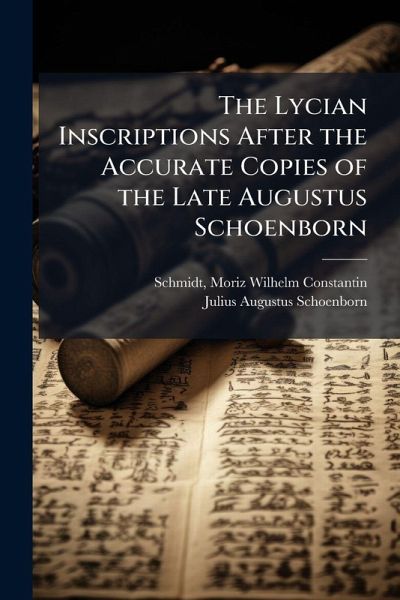
The Lycian Inscriptions After the Accurate Copies of the Late Augustus Schoenborn

PAYBACK Punkte
8 °P sammeln!
The Lycian Inscriptions After the Accurate Copies of the Late Augustus Schoenborn, by Moriz Wilhelm Constantin Schmidt and Julius Augustus Schoenborn, is a scholarly work dedicated to the study of Lycian inscriptions. This book provides a critical commentary and an essay on the alphabet and language of the Lycians, offering valuable insights into the linguistic and historical context of ancient Lycia. Based on the accurate copies meticulously made by the late Augustus Schoenborn, this book serves as a significant resource for researchers and scholars interested in ancient languages, epigraphy,...
The Lycian Inscriptions After the Accurate Copies of the Late Augustus Schoenborn, by Moriz Wilhelm Constantin Schmidt and Julius Augustus Schoenborn, is a scholarly work dedicated to the study of Lycian inscriptions. This book provides a critical commentary and an essay on the alphabet and language of the Lycians, offering valuable insights into the linguistic and historical context of ancient Lycia. Based on the accurate copies meticulously made by the late Augustus Schoenborn, this book serves as a significant resource for researchers and scholars interested in ancient languages, epigraphy, and the history of Anatolia. It presents a detailed analysis of the inscriptions, shedding light on the culture, society, and linguistic features of the Lycian civilization. This work remains essential for anyone studying the Lycian language and its place within the broader context of ancient Mediterranean cultures. This work has been selected by scholars as being culturally important, and is part of the knowledge base of civilization as we know it. This work was reproduced from the original artifact, and remains as true to the original work as possible. Therefore, you will see the original copyright references, library stamps (as most of these works have been housed in our most important libraries around the world), and other notations in the work. This work is in the public domain in the United States of America, and possibly other nations. Within the United States, you may freely copy and distribute this work, as no entity (individual or corporate) has a copyright on the body of the work. As a reproduction of a historical artifact, this work may contain missing or blurred pages, poor pictures, errant marks, etc. Scholars believe, and we concur, that this work is important enough to be preserved, reproduced, and made generally available to the public. We appreciate your support of the preservation process, and thank you for being an important part of keeping this knowledge alive and relevant.



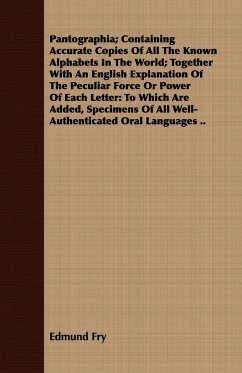
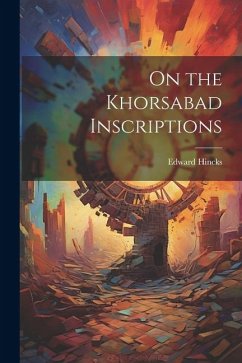
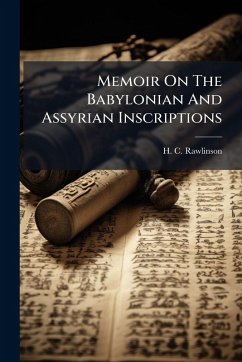
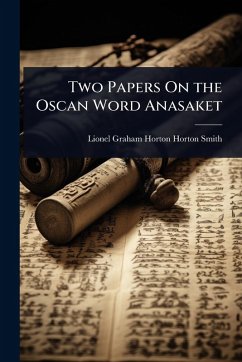
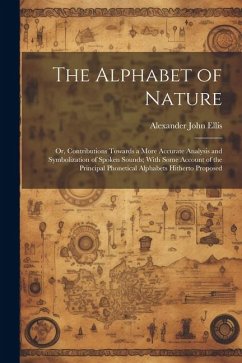
![Thesaurus linguae Latinae epigraphicae. [The Olcott] dictionary of the Latin inscriptions Cover Thesaurus linguae Latinae epigraphicae. [The Olcott] dictionary of the Latin inscriptions](https://bilder.buecher.de/produkte/74/74542/74542204n.jpg)
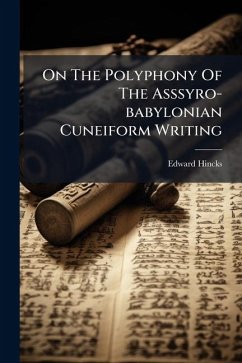
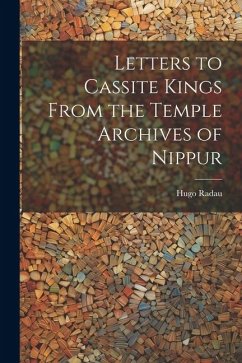
![The Primitive Baptist [serial]; v.24-25 Cover The Primitive Baptist [serial]; v.24-25](https://bilder.buecher.de/produkte/66/66191/66191718n.jpg)
![The Primitive Baptist [serial]; v.4 Cover The Primitive Baptist [serial]; v.4](https://bilder.buecher.de/produkte/65/65581/65581691n.jpg)